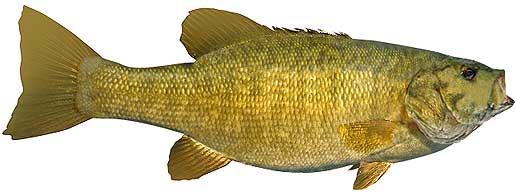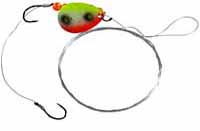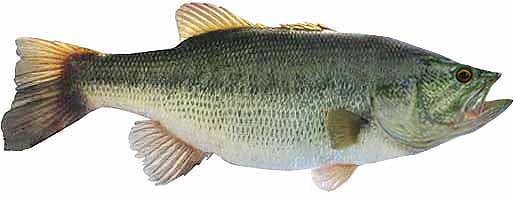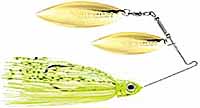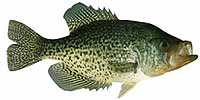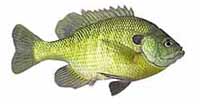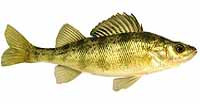Fishing Report For Nantahala Lake, NC
By Rick Seaman
Last updated on .
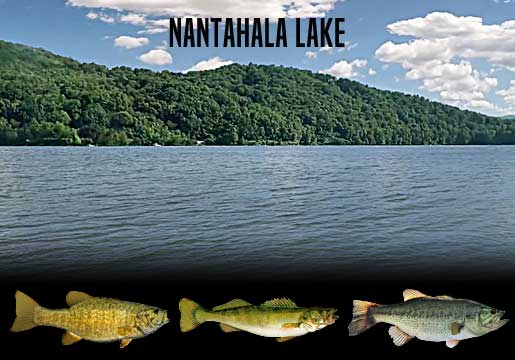
Fishing Reports
Popular Fish Species Nantahala Lake, NC
Smallmouth Bass
Current Report: Good To Very Good
Nantahala Lake is widely-known as a terrific smallmouth bass fishery. The lake has clean, clear water with plenty of forage which is ideal habitat for smallies.
FALL. Fall is in full swing and smallmouth have followed schools of baitfish into coves and bays 6 to 20 feet deep. They thrive in the cold, clean water, which is an ideal environment for them. Locals report that tube jigs are a great choice when the bass are around 15 feet deep. Pockets and points in the Rocky Branch arm and in the Choga area, are producing nice smallies along sharp drop offs. Drop shot rigs with small worms or shad shaped plastics are also popular in 10' water or deeper. Jerkbaits, deep-diving crankbaits, and slow-rolled spinnerbaits, are also successful, when bass are shallow to mid depth. Later in Fall, smallies move to slightly deeper water, around 10 to 25 feet deep. Fishing shallow for smallmouth is often good on cold, windy, cloudy and rainy days.
WINTER. Winter will isolate them around deeper structure, points, flats and creek channels, often suspending in open water above these features. They can generally be found from 15 to 30 feet deep. Jigging spoons, tube baits, drop-shot worms, jigs and Ned rigs tend to temp smallmouth in deep water. I like to work these deeper haunts very slowly, as the bass are somewhat sluggish. Here they hold, feeding less frequently, awaiting warmer water to return in Spring.
SPRING. When water temperatures rise into the 50's, smallmouth move from deep wintering spots to shallower water, just outside spawning areas. They feed heavily in 4 to 12 feet of water at this time, and are typically caught on jerkbaits, crankbaits, tube baits, Ned rigs, and crayfish imitating plastics. Once water warms into the high 50's, they move into shallower water, and create nests in gravel or sand areas, then lay their eggs. Females then move to deeper water and males remain to guard the eggs, and then the fry. After a couple weeks, the males also move into 8 to 20 feet deep, and feed aggressively. Crankbaits, tube baits, Ned rigs, plastic worms, spoons and swimbaits are catching smallies during this period.
SUMMER. Smallmouth bass are currently feeding shallow early and late in the day in 6 to 12 feet of water. Locals report catching both quantity and quality on topwater baits early on summer mornings, and on cloudy days. They are being caught on topwater, crankbaits, swimbaits, Ned rigs and tube baits. Smallmouth bass here feed on crawfish, gizzard shad, and small sunfish. They prefer rocky or gravel bottom areas, as this is where crayfish live. During the hotter parts of the day, they are being caught on points, humps, and ledges 20 to 30 feet deep. Often these deeper fish tend to school, so finding them can deliver some fast action. Anglers fishing deep points and ledges on the main lake channel, and deeper structure in the Rocky Branch arm, are reporting good catches.
Walleye
Current Report: Poor To Good
When walleye are in 15' to 25' of water a blade bait or a swimbait is a good way to locate the fish. Fan cast and cover lots of water. Jighead weights vary from 1/4 oz to 3/4 oz depending on depth and wind conditions. Once you locate a school of walleye, a drop-shot rig with minnow-shaped plastics is a good way to work the school. Locals report spoons, deep-diving crankbaits, and worm harness spinners are catching walleye while trolling.
FALL. Fall brought cooler temperatures to shallow water, drawing walleye and baitfish shallower. Walleye continue to be a major draw for anglers. The first and last hour of the day, or on cloudy days is the best time to be catching walleye. Locals report catching nice walleye on long points, flats along the river and creek channels, and structure off shore. Jigs, swimbaits, spoons, crankbaits, jerkbaits, and spinnerbaits are all historically good for catching walleye this time of year. Early Fall finds them in 8 to 15 feet of water. Later in Fall, they move out slightly deeper. Dragging jigs, bottom bouncers, or worm harnesses with nightcrawlers or leeches, around ledge drop-offs is catching walleye fairly consistently. Watch for the bigger walleye to be slightly deeper than the majority of the school.
WINTER. This Winter fishing for walleye has been pretty good through the ice, for the last few years. Before, during and after the ice, anglers report catching them in the main basin area, in 18 to 40 feet of water, along deep creek channel edges, rocky humps and ledges. Steep drops in the area toward the dam are also producing during these cold months. They primarily feed on small fish, staying close to the bottom. After ice-out blade baits, jigs, swimbaits, spoons, deep-diving crankbaits, and worm harness spinners, all work while deep trolling or drifting.
SPRING. Early Spring brings warming water in the shallows, and draws walleye here to feed, especially rocky areas and inlet channels. In Spring work deep points, drop offs, submerged structure, rock ledges, deeper flats and edges adjacent to deeper water. Here, in 5 to 12 feet of water, they will spawn once the water warms to the mid to high 40's. When they move shallow, bright colored jigs, tipped with minnows or nightcrawlers typically catch them. Spinnerbaits, jerkbaits and crankbaits are also working when walleye are up shallow. Afterwards, they move to 20 to 25 feet deep around points, flats, shoals and ledges, nearby shore, often staying in close proximity to their spawning locations.
SUMMER. Water temperatures rise in Summer, and walleye fishing is good if you can get your bait deep enough. Early in Summer, walleye tend to concentrate in 8 to 20 feet of water. Throughout Summer, early in the morning, and from dusk to long after dark are good times to catch walleye. At those times they move slightly shallower to feed in low-light conditions. Night fishing is often good in Summer, as well. The rest of the time they are cruising flats and creek channel edges, 20 to 40 feet deep , preferring the cooler temperatures. Edges of the Rocky Branch main channel are popular this time of year. When the bite is slow, grubs and nightcrawlers, fished just off the bottom typically catch walleye.
Largemouth Bass
Current Report: Good
FALL. Now that Fall is in full swing, bass here have moved shallow, following schools of baitfish into coves and shallow bays around 4 to 18 feet of water. Tournament anglers report catching quality largemouth bass on vibrating jigs, with a variety of creature-bait trailers. Also, topwater, jerkbaits, crankbaits, and slow-rolled spinnerbaits are catching some nice bass. Flats and small pockets around Choga, and the Rocky Branch access area, are loaded with both bait and bass. Later in Fall, as deeper water cools, bait and bass move out to ledges, channel edges, points and humps where flutter spoons, jigs and drop shots are often good choices in 8 to 18 feet of water.
WINTER. Winter will isolate largemouth around slightly deeper structure, flats, points and creek channels. They can be found from 8 to 30 feet deep. Here they hold, feeding less frequently, awaiting warmer water to return in Spring. Slow presentations are key to getting bites. On warmer days, especially during late afternoons, bass may move into 6 to 12 feet of water to feed.
SPRING. Once water temperatures rise into the low 60's, largemouth will move from deep wintering holes, to shallower water nearby spawning areas. Anglers report good topwater action from mid Spring through Summer, especially early in the morning, and on cloudy days. Vibrating jigs, jerkbaits and spinnerbaits typically get bites just away from the shoreline. At this time they are feeding aggressively in about 2 to 12 feet of water, and preparing for the spawn. Once water warms into the mid to high 60's, they will move into 2 to 5 feet of water, and create nests, then lay their eggs. Immediately afterwards, females move to deeper water and males remain to guard the eggs, and then the fry. After a couple weeks, the males also move to slightly deeper water, around 6 to 20 feet deep. Deep-diving crankbaits, vibrating jigs, plastic worms, jigs, worms, and swimbaits catch bass during this period.
SUMMER. Water temperatures will warm considerably in Summer. Bass will feed shallow, early and late in the day, where they will be caught in 6 to 10 feet of water, on square-bill crankbaits and spinnerbaits. Wacky-rigged stick worms always catch finicky bass when the bite is slow. Largemouth bass here feed on shad, herring, small sunfish and crawfish. During the hotter parts of the day, they are being caught on points, channel edges, and ledges 15 to 20 feet deep.
Fishing Video
Fish species to fish for...
Guide to fishing for largemouth bass, smallmouth bass, channel catfish, blue catfish, black crappie, walleye, rainbow trout, brook trout, brown trout, bluegill, yellow perch, kokanee salmon and striped bass at Nantahala Lake in North Carolina.
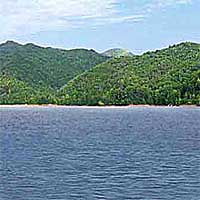 Nantahala Lake is a 1,600-acre lake, with around 30 miles of shoreline. It is the only lake in the South with a population of kokanee salmon. Smallmouth bass, largemouth bass, walleye, trout, catfish, crappie, stripers and sunfish also reside here. Smallmouth bass are the prized catch here at Nantahala Lake.
Nantahala Lake is a 1,600-acre lake, with around 30 miles of shoreline. It is the only lake in the South with a population of kokanee salmon. Smallmouth bass, largemouth bass, walleye, trout, catfish, crappie, stripers and sunfish also reside here. Smallmouth bass are the prized catch here at Nantahala Lake.
Primary fish species to catch
Click images for fishing tips and details about each species.
Today's Weather & Forecast
Fishing Boat Rentals
Click here for fishing boat rentals.
Marinas
Click here for marinas.
Public Boat Launch Ramps & Landings
Click here for boat ramps.
Fishing License
Click here for a North Carolina Fishing License.
Map - Fishing & Access
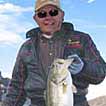 Rick Seaman is a fishing enthusiast with over five decades of fishing experience, a retired tournament fisherman, author of numerous published articles on fishing, and co-author of the book "Bass Fishing - It's not WHAT you throw, It's WHERE you throw it".
Rick Seaman is a fishing enthusiast with over five decades of fishing experience, a retired tournament fisherman, author of numerous published articles on fishing, and co-author of the book "Bass Fishing - It's not WHAT you throw, It's WHERE you throw it".
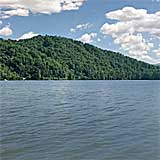 Contact Information
Contact Information
Franklin Chamber of Commerce
425 Porter Street
Franklin, North Carolina 28734
866 372-5546
Fishing lakes in each state
111625
Nantahala Lake, NC Report
NORTH CAROLINA


Trout, bass, walleye and salmon fishing in southeast NC.


